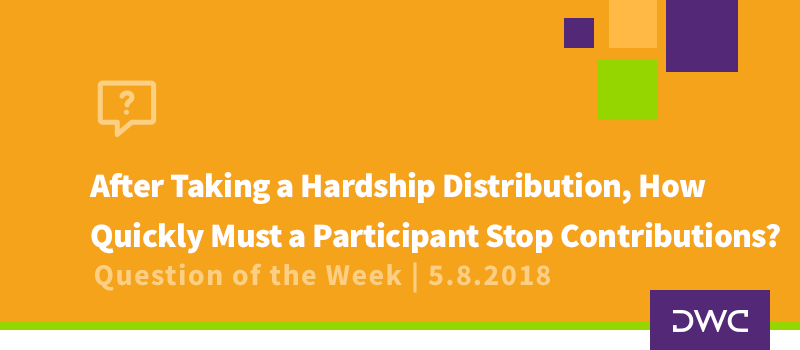
Is It Time to Reinvent the 401(k) or Our Expectations of It?
2009 was a tough year for the 401(k) plan. From the Time cover story [Stephen Gandel, "Why It's Time to Retire the 401(k)," Time, 174(15): 28–34] to the pages of this journal [Teresa Ghilarducci, "If This Isn't the Time for a Guaranteed Retirement Account, When Is It?" Journal of Pension Benefits, 16(3): 21–28], numerous articles have espoused that retirement shortfalls from market declines are evidence that the 401(k) plan is a failure. However, such conclusions appear to be based on a misunderstanding of what the 401(k) was intended to be.
A Brief History of the 401(k) Plan
The 401(k) plan was officially created by the Revenue Act of 1978 with the first proposed regulations coming in 1981, but cash or deferred arrangements ( "CODA") existed for decades prior. Both the 401(k) and its predecessors were intended to be savings plans to supplement Social Security and traditional pension plans.
CODAs were utilized in the 1950s to allow employees to defer some or all of their profit sharing bonuses in lieu of a taxable cash payment. It was not until the early to mid-1990s when CODAs saw widespread expansion as the 401(k) became a mainstream employee benefit with more than 37 million participants contributing by 1998.
Some writers have condemned the 401(k) as a subterfuge that allowed employers to reduce benefit costs without employees catching on … just another example of the fat cats sticking it to the little guys. While it is true that many companies have terminated their defined benefit plans due to spiraling costs, employer spending on retirement benefits has grown by more than 1,200% from 1950 through 2007, and spending on health benefits increased by more than 9,500% over the same time-period [ Data Book on Employee Benefits, Employee Benefits Research Institute, Chapter 2, Table 2.2]. Combined growth in benefit expenditures of over 37 times, while wages and salaries grew by slightly more than four times, can hardly be characterized as sticking it to the little guy.
It is also vital to the discussion to consider how life expectancies have changed over time. In 1950, the average life expectancy was 68.2 years. By 2005, it had increased to 77.8 years [www.infoplease.com/ipa/ A0005148.html]. All the while, normal retirement age has remained at 65, more than quintupling the number of years an individual's retirement savings must last.
Save More
Despite all the miracle solutions to weight loss, it all really comes down to eating right and exercising. Similarly, the secret to accumulating meaningful retirement balances is to spend less and save more. Short of winning the lottery, there is no financial equivalent to the Thigh Master or the Subway diet that will lead to successful retirement.
According to the U.S. Department of Commerce Bureau of Economic Analysis, the U.S. savings rate as a percentage of disposable income has decreased from just over 10% in 1981 to only 1.7% in 2007 [ National Income and Product Accounts, Table 2.1–Personal Income and Its Disposition]. Despite the abysmal level of savings, moderate-income workers are almost 20 times more likely to save when covered by a workplace plan, such as a 401(k) [Employee Benefits Research Institute].
Therefore, we must pursue means of expanding workplace coverage, whether by new products, such as the payroll-deduction IRA currently being discussed in Washington, or by legislative changes, such as relaxed top-heavy rules for short-service employees permitted to join the plan early. Whether in annuities or lump sums, we must also assist participants in determining how much they will need in retirement, so that they have realistic expectations of how much they need to save and how much savings they will have accumulated when they retire.
Maintain Reasonable Fees
Many pages in articles and books have already been devoted to the effect of service-provider fees on retirement accounts, and a full discussion is beyond the scope of this article. It has been oft-cited that a one-percentagepoint reduction in fees allocated to participant accounts can increase balances by as much as 28% over a 35- year period [U.S. Department of Labor Web site, www.dol.gov/ebsa/Publications/401k_employee.html]. The upcoming regulations requiring clearer disclosure of retirement plan fees will enable plan sponsors to identify excess fees and take steps to eliminate them.
Put the Participant-Investment-Direction Genie Back in the Bottle
Participant-direction began its growth when making money in the stock market was as easy as hitting water when falling out of a boat. Its enormous growth in popularity is also attributable in no small measure to marketing efforts of mutual fund companies that convinced plan sponsors that participant-directed investments were the magic bullet to avoid fiduciary liability.
Now that all of the various stock market bubbles have burst, it is woefully apparent that the average participant simply does not have the expertise and discipline to maintain an investment strategy that will prove effective over time. Enrollment meetings, investment advice, and target-date funds are not the answer. Presenting a 20-fund lineup with a slick enrollment booklet and a colorful, animated Web site does not turn an employee with no other investment experience or knowledge into Warren Buffet. And, no amount of education or effort on anyone's part will do so.
An investment advisor I know often recounts the story of an employee education meeting at which he explained the concept of target-date funds. After the discussion, one of the employees raised a hand and said, "You've talked a lot about those target funds. Do you have any that invest in Wal-Mart instead?" While this individual represents one extreme end of the spectrum (hopefully), many experts don't seem to be much more knowledgeable when it comes to target-date funds.
Why else would it come as news that different funds with the same target date have different equity allocations? Why would Congress be surprised and distraught enough about the wide range of returns on 2010 funds to require public hearings? If neither participants nor experts have an adequate understanding of a supposed "set it and forget about it" option, there is no way participants can dissect alphas, betas, expense ratios, glide paths, and the myriad other factors to design an appropriate asset allocation from a menu of 20 mutual funds plus a brokerage window.
According to Watson Wyatt Worldwide, the investment performance in defined benefit plans (read trusteedirected) has surpassed that of 401(k) plans by an average of more than one percentage point per year from 1995 through 2008 and with less volatility [ "Defined Benefit vs. 401(k) Investment Returns: The 2006–2008 Update," Watson Wyatt Insider, www.watsonwyatt.com/us/pubs/insider/showarticle.asp?ArticleID=22909]. If the 1% argument holds enough water with regard to fees to spur new legislation and regulations, it seems that it is equally compelling on the return side of the equation.
Restrict Access
It has become far too easy for participants to access their 401(k) accounts during their working years. If savings are to accumulate, they must remain in the plan. One way to accomplish this is to remove the option to take the money and run.
The Government Accountability Office published a report in August 2009 illustrating, among other things, the negative long-term impact when a participant cashes-out his or her 401(k) account on termination of employment. According to that report, a 35-year-old, moderate-income employee taking a complete cash-out will have 31% less money available for retirement benefits at age 65 than will a participant who leaves his retirement money in the plan [ "401(k) Plans: Policy Changes Could Reduce the Long-term Effects of Leakage on Workers' Retirement Savings"].
An October 2009 survey by Hewitt Associates indicates that nearly half of the employees of that age do, in fact, cash-out their accounts on employment termination [ "Hewitt Study Shows Nearly Half of U.S. Employees Cash Out Their 401(k) Accounts When Leaving Their Jobs," Hewitt Associates, October 28, 2009, www.hewittassociates.com/intl/na/en-us/AboutHewitt/Newsroom/PressReleaseDetail.aspx?cid=7498].
As Congress considers other ways to shore up the system, why not consider eliminating access to 401(k) accounts or expanding the automatic rollover rules to require rollovers of all balances prior to attainment of age 59 ½?
Resetting Expectations
The 401(k) plan in its current form cannot pick up the slack for a questionable Social Security system and disappearing traditional pension plans and do it for five times as many years. Expecting it to do so is like expecting a chihuahua to run the Iditarod. However, that does not make the 401(k) plan a failure. Quite the contrary. According to the Investment Company Institute, 401(k) plans held $2.5 trillion as of June 30, 2009, and cover 50 million active participants.
The retirement plan industry is at a crossroad and must decide what it expects from the 401(k) in the future to determine the appropriate course of action. One option is to acknowledge that the 401(k) plan was not intended to be a retirement plan. It is a successful supplement to other retirement benefits and not a scapegoat for the shortcomings of a dying private pension system. The back-to-basics changes I have described would increase its effectiveness as a supplement, but another solution is needed to fill the gap left by the ever-shrinking defined benefit system.
Alternatively, the 401(k) plan can be completely transformed into a true retirement plan. We're talking about a John Travolta from Vinnie Barbarino of "Welcome Back, Kotter" to Vincent Vega of "Pulp Fiction" transformation, where the name is the same, but the character of the arrangement undergoes a complete metamorphosis. There must be substantive change that goes well beyond the window-dressing of slick Web sites and the marginally effective automatic enrollment and QDIAs.
This may include mandatory employee contributions at significantly higher rates than a 3% to 6% QACA and required safe-harbor type employer contributions. It may include removing some of the design restrictions from the newly-minted DB(k) plan to make it practical for more employers to implement. Maybe, it is as straightforward as revitalizing something akin to the target benefit plan to provide pension-like benefits with less liability-risk for employers.
Conclusion
All of the possible solutions carry pros and cons, and much more honest discussion is needed. Is it the responsibility of the government to ensure a dignified retirement? How do we even define what a dignified retirement is? Do we require employers to shoulder the burden of securing retirement for a relatively transient workforce? Must individuals take responsibility for their own financial well-being?
It will take a joint effort. Government has to rethink the conventional wisdom on deductibility and nondiscrimination to incentivize business owners. Employers need to take advantage of those incentives to offer their employees a robust yet portable framework in which to accumulate retirement dollars. But it doesn't stop there. Any solution must include a significant measure of individual responsibility to plan, save, and reap the rewards or suffer the consequences, or it is destined for mediocrity no matter how good it looks on paper.
To quote the great philosopher Dennis Miller, "Of course, that's just my opinion. I could be wrong."

















